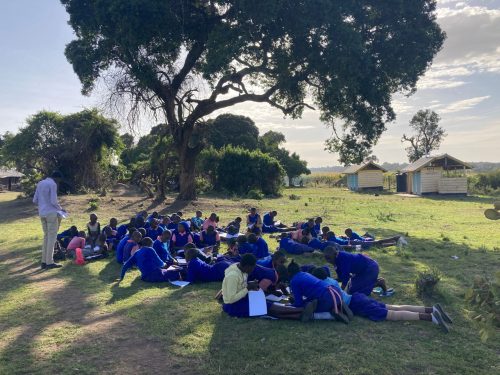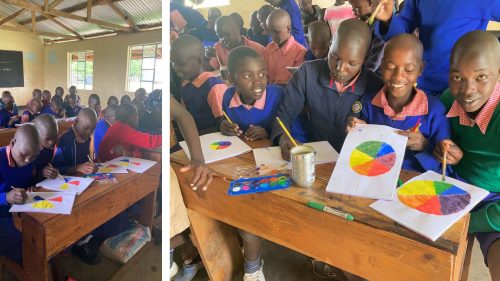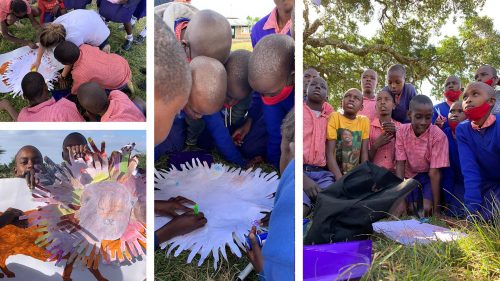
Picture this, a Wednesday afternoon in the sunny Maasai Mara, 70 children ages ranging from 4 to 16 years old all sitting calmly and quietly under a tree, drawing and painting. This is how I spend my Wednesday afternoons. It is so lovely.

In February 2021, Teach the Wild, a teaching collective I am part of here in Kenya, ran an art competition at Partakilat school. The idea was to bring art and wildlife together to create awareness for conservation. There was much enthusiasm to enter the competition and we enjoyed all the entries we received.


But I was a bit disheartened when I saw some of the entries were exactly the same and was worried about the lack of individualism and self-expression. It was clear that these children had never had a formal art lesson before, something I have taken for granted my whole life.
So I approached the headmaster and together we set up the project. It started as a small club of 15-20 children; after eight months we now have 70 children enjoying a sunny afternoon of art under a tree in the Maasai Mara.


The aim of the club is to bring something different to the children's lives outside of their Kenyan curriculum. There are no marks, no assessments and a class where nothing you do is wrong — just freedom of expression whilst learning about colour, patterns and using different media to explore nature and make art.

I started the club using a box of my own pencil crayons, pens and some old scrap paper. With a lovely donation from a previous Angama guest who found my Instagram page, we have been able to buy some supplies. A further donation was left by a guest and I was able to top up the supplies a little more. Here in rural Kenya, a little bit really does go a long way.
The children have done some wonderful work and the teacher who I work with, Mr. Joshua, is always so happy and proud of the students, but I think it is me that is learning the most.

As a primary school teacher, I thought I’d start my first lesson with a collaborative art piece; we were going to make a lion. The age-old trick: trace around the hand, colour it in and cut it out, stick them all together and you have a lion’s mane. Wow, did I get a surprise when I realised that my students had never seen scissors, let alone used them. I got the same reaction with a pencil sharpener and colour mixing. Seeing a child’s face light up when they realise the pure magic of mixing yellow and blue together to make green — I will never forget the looks on the faces of these children when they saw it happen for the first time.

Teaching children is a calling, but teaching children who have never done art before, the basics that we all grew up with, is an experience that I will never take for granted. I feel so lucky to be the person to have introduced magic — of colour mixing, scissors and a simple sharpener — to my art club children.
If you are interested in supporting Diana’s art classes, you can email her directly at: [email protected]
Filed under: Inside Angama
Subscribe for Weekly Stories
Comments (0):

Angama Image Gallery